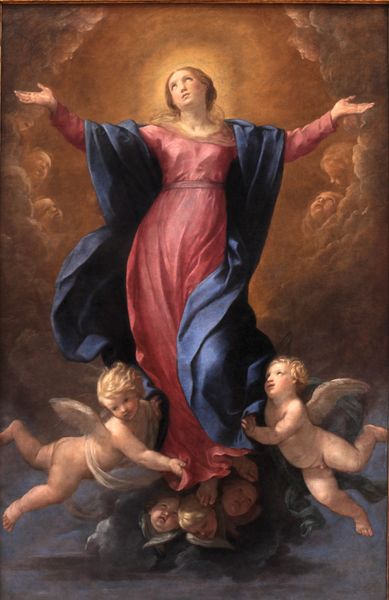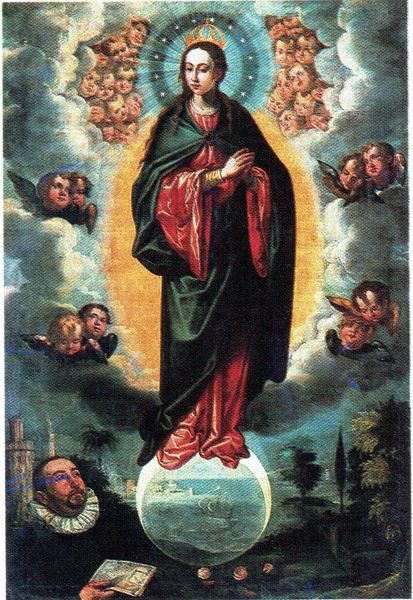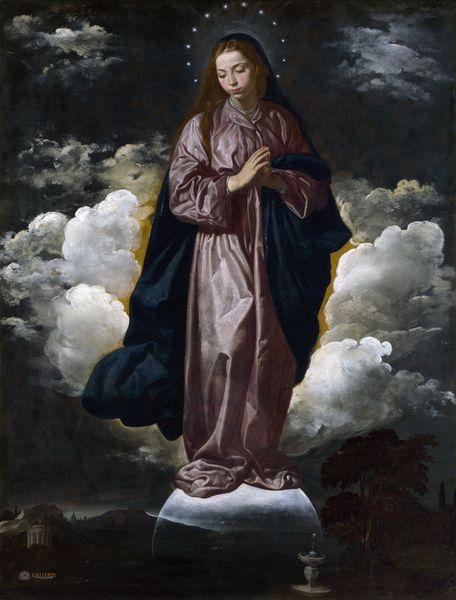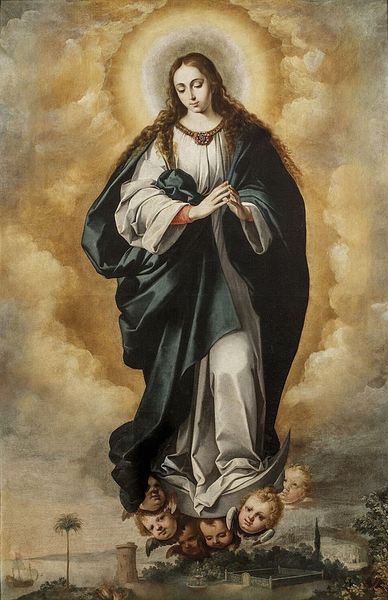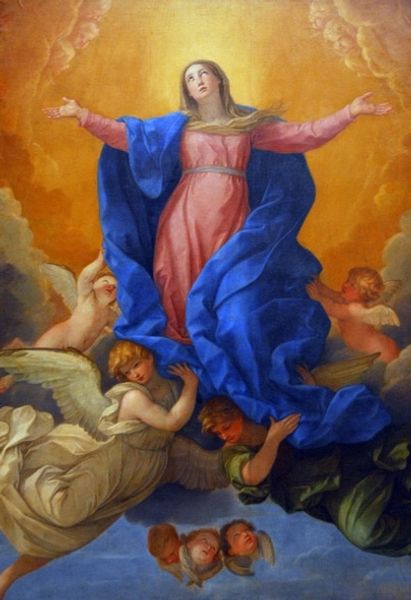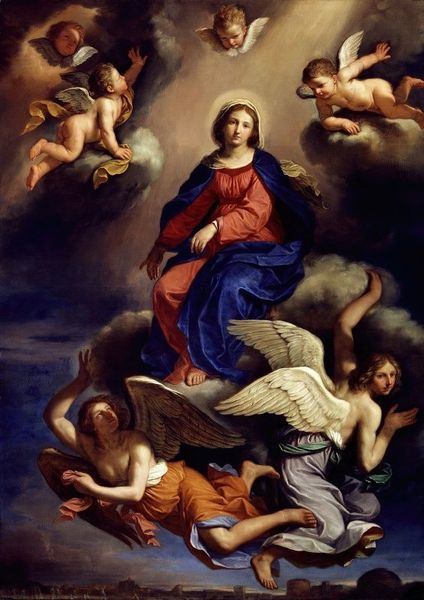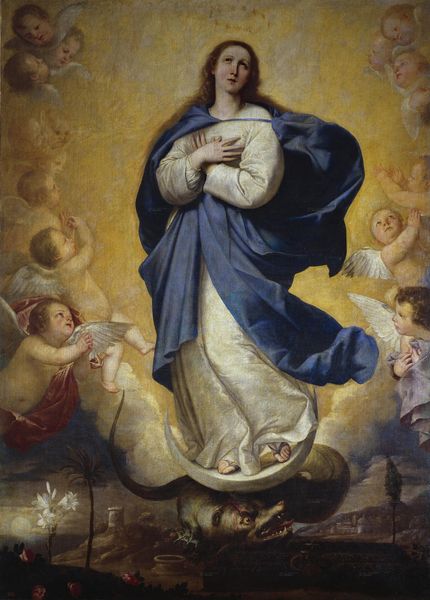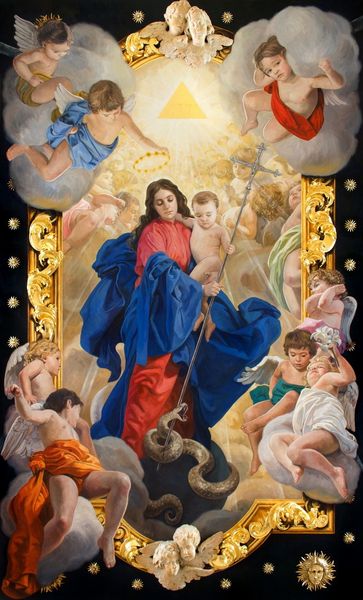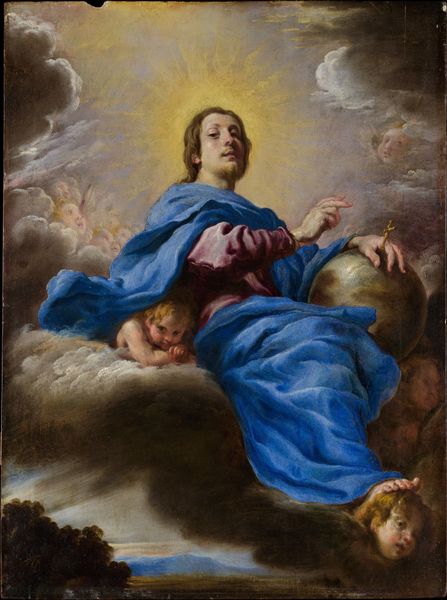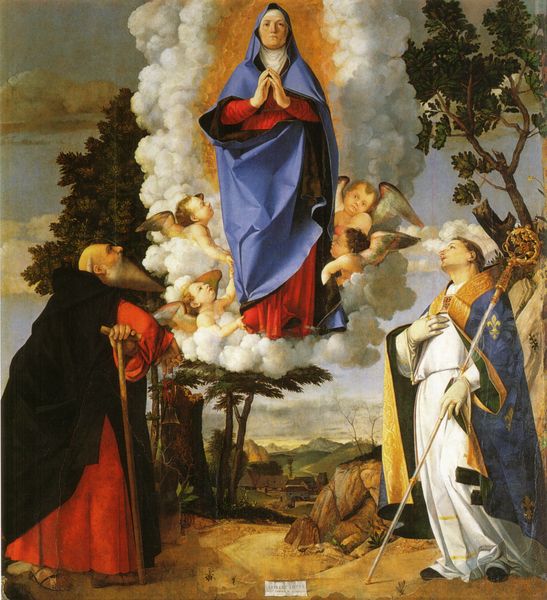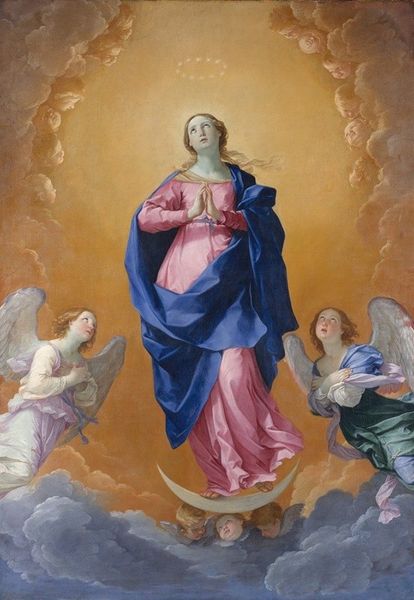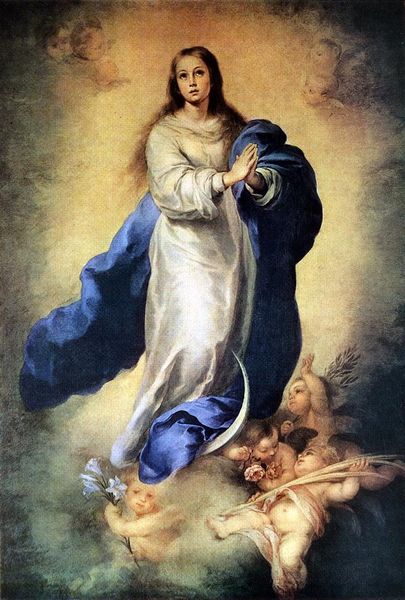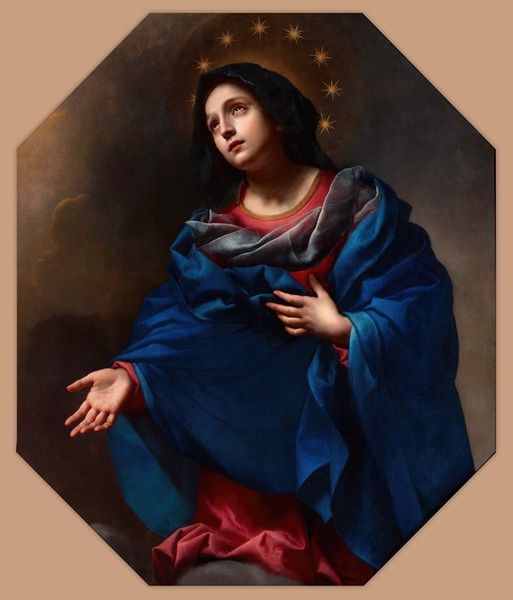
painting, oil-paint
#
baroque
#
painting
#
oil-paint
#
figuration
#
oil painting
#
christianity
#
italian-renaissance
#
virgin-mary
#
fine art portrait
Copyright: Public domain
Editor: This is Alonzo Cano's "Inmaculate Conception" from 1619, painted with oils. I'm immediately struck by the contrast between the dark background and the radiant figure. It feels both ethereal and somehow grounded. What catches your eye when you look at this piece? Curator: My interest immediately goes to the production of meaning here. Think about the sourcing and value associated with oil paint in 17th-century Spain – who had access to those materials and what kind of patronage was necessary to commission such a piece? This wasn’t simply about depicting religious piety, but also about demonstrating economic power through the command of specific labor and resources. Editor: So, it's not just about the Virgin Mary, but about who could afford to depict her in such a lavish way? Curator: Precisely. Consider also the skilled labor required to grind the pigments, prepare the canvas, and then actually execute the painting. It represents a complex network of artisanal production, all contributing to the glorification of both the religious figure and, indirectly, the patron's status. Do you notice anything interesting about her garments and the folds? Editor: They look very carefully rendered, but almost exaggerated, as if the fabric itself has weight and presence. Curator: Exactly. Cano uses the materiality of the paint to convey a sense of luxury and tactile experience. It speaks volumes about the culture of consumption and display that underpinned even ostensibly religious imagery. So it speaks as much to the devotion as it speaks to economic systems of the era. Editor: I never thought about religious art in terms of economics and labor before. This perspective gives it a whole new dimension! Curator: Indeed, understanding the materials and processes is crucial to grasping the social dynamics embedded within art history.
Comments
No comments
Be the first to comment and join the conversation on the ultimate creative platform.
